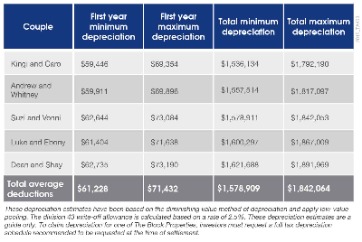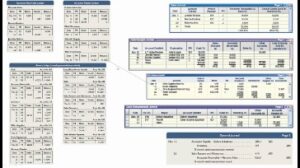Content

Depending on your business type, revenue might come from product sales or services rendered, or it might come from a combination of both. Revenue is reported on your income statement, which is the other most commonly used business financial statement. The income statement shows your revenue, followed by your business expenses. Expenses are subtracted from revenue to calculate your net income or loss. At the end of the second quarter of 2020, Morningstar had $287 million in unearned revenue, up from $250 million from the prior-year end. The company classifies the revenue as a short-term liability, meaning it expects the amount to be paid over one year for services to be provided over the same period.
For this reason, it’s crucial to understand how to recognize subscription revenue. You can design workflows that define, implement, and translate performance obligations into your General Ledgers and recognize revenue accordingly. Financial operations are always efficient, thanks to documented https://quick-bookkeeping.net/how-to-make-an-invoice/ audit trails and accounting controls. Revenue backlog isn’t a complicated concept, but tracking it can be a lot of work if you don’t have the right tools. You need a revenue recognition solution that can automatically calculate and analyze your revenue backlog and other accounting metrics.
Is unearned income the same as unearned revenue?
Classic examples of unearned revenue include rent payments made in advance, prepayments for newspaper subscriptions, annual licenses for the use of software, and much more. Unlike accrued revenue, deferred revenue is considered a liability because the company has a legal obligation to provide the service or product in the future. It is recorded as “unearned revenue” in the income statement. Unearned revenue, sometimes referred to as deferred revenue, is payment received by a company from a customer for products or services that will be delivered at some point in the future.
- It is recorded as “unearned revenue” in the income statement.
- So, unearned revenue remains a liability on the books until any risk of having to repay the money is gone.
- This reduces the chances of clients canceling subscriptions due to a lack of suitable plans.
- The subscription expires December 31 and they have access to the software today, January 1.
- This is unless the discount is specific to a particular performance obligation.
- Deferred revenue refers to payments customers give you before you provide them with a good or service.
In this image, there is an invoicing schedule with one record, and a revenue recognition schedule with a record for each month of revenue recognition over the term. Yes, I track normalized MRR/ARR separate from recognized revenue. By normalized, I mean that I recognize on a daily basis and normalize out the number of days in the month. In this example, we will recognize $1,000 a month over a twelve month period.
Accounting and Taxes
As you fulfill the obligations of that subscription, you will recognize the revenue ratably over the contract term. A SaaS company uses subscription-based deferred revenue when they sell a license for their new application. They’re supplying customers with technology services for a defined period of time with an upfront fee.
The contract will dictate when payments are due and when deliverables are to be met. In your accounting, you will schedule unearned Unearned Revenue And Subscription Revenue revenue adjusting entries to match these dates. Scheduling these entries will organize and automate deferred revenue recognition.
Finding unearned revenue on a balance sheet
However, with long-term subscriptions, you invoice a customer for a one-year subscription, but you can’t recognize that revenue instantly on the income statement. You must park the revenue on your balance sheet as a deferred revenue liability. Trying to convert unearned revenue into earned revenue too quickly, or not using a deferred revenue account at all, can be classified as aggressive accounting. If revenue gets posted to the income statement too early, it can overstate actual sales revenue. For most businesses where prepayment terms are 12 months or less, unearned revenue is treated as a current liability on the balance sheet. Unearned revenue is a liability that gets created on the balance sheet when your company receives payment in advance.

Even though the concept of deferred revenue is pretty straightforward , in application, it can get complex for subscription-based businesses. Concretely, the software uses your operations as a database and automatically calculates your recognized revenue balance. You then get reports telling you how much can be recognized each month. Using software with dedicated features to compute your deferred revenue in saas business.
But you have to be sure you have an accurate picture of your current contracts and agreements. For example, if you’re not a SaaS business and instead you sell physical products, you probably don’t have a meaningful revenue backlog. A revenue backlog, on the other hand, starts the moment in which a contract is agreed on, which is often sometime before the beginning of the invoicing period.

This is crucial in enabling investors to accurately assess the company’s financial status and obligations to deliver goods or services in the future. Deferred revenue is money received in advance for products or services that are going to be performed in the future. Rent payments received in advance or annual subscription payments received at the beginning of the year are common examples of deferred revenue.